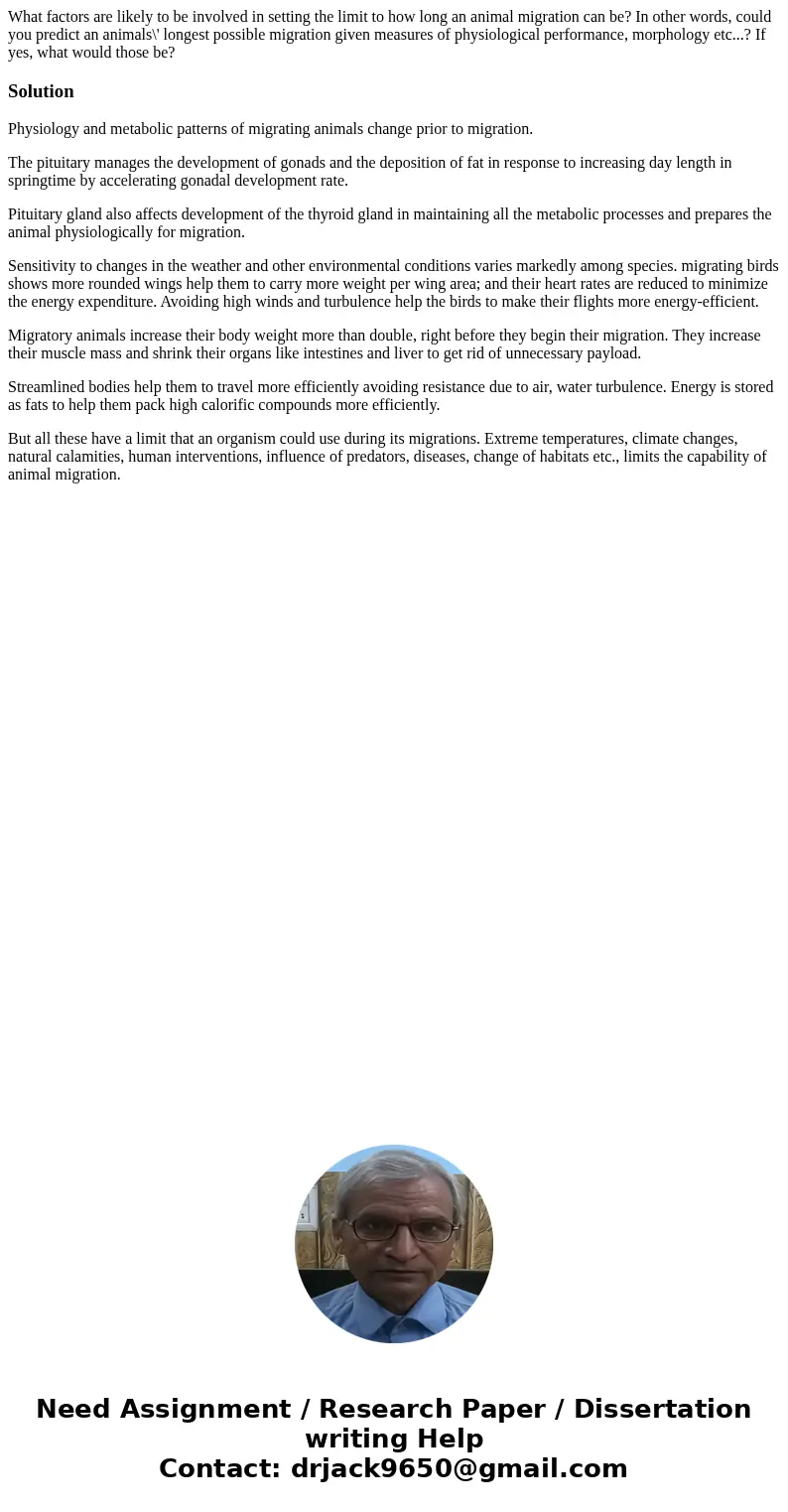What factors are likely to be involved in setting the limit
What factors are likely to be involved in setting the limit to how long an animal migration can be? In other words, could you predict an animals\' longest possible migration given measures of physiological performance, morphology etc...? If yes, what would those be?
Solution
Physiology and metabolic patterns of migrating animals change prior to migration.
The pituitary manages the development of gonads and the deposition of fat in response to increasing day length in springtime by accelerating gonadal development rate.
Pituitary gland also affects development of the thyroid gland in maintaining all the metabolic processes and prepares the animal physiologically for migration.
Sensitivity to changes in the weather and other environmental conditions varies markedly among species. migrating birds shows more rounded wings help them to carry more weight per wing area; and their heart rates are reduced to minimize the energy expenditure. Avoiding high winds and turbulence help the birds to make their flights more energy-efficient.
Migratory animals increase their body weight more than double, right before they begin their migration. They increase their muscle mass and shrink their organs like intestines and liver to get rid of unnecessary payload.
Streamlined bodies help them to travel more efficiently avoiding resistance due to air, water turbulence. Energy is stored as fats to help them pack high calorific compounds more efficiently.
But all these have a limit that an organism could use during its migrations. Extreme temperatures, climate changes, natural calamities, human interventions, influence of predators, diseases, change of habitats etc., limits the capability of animal migration.

 Homework Sourse
Homework Sourse